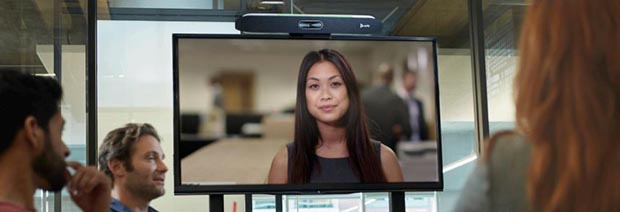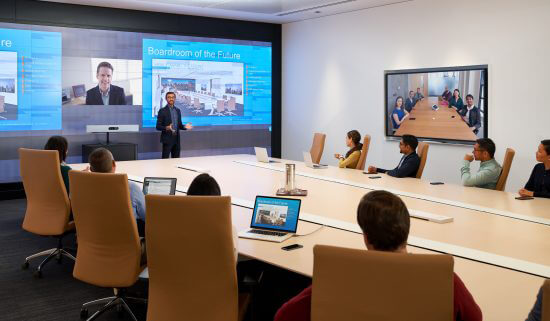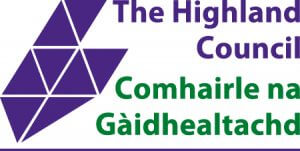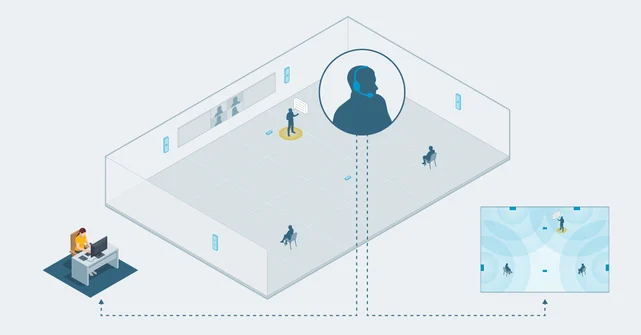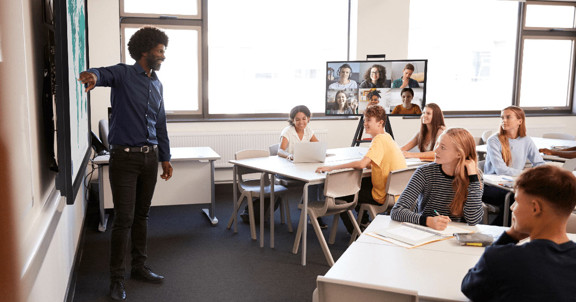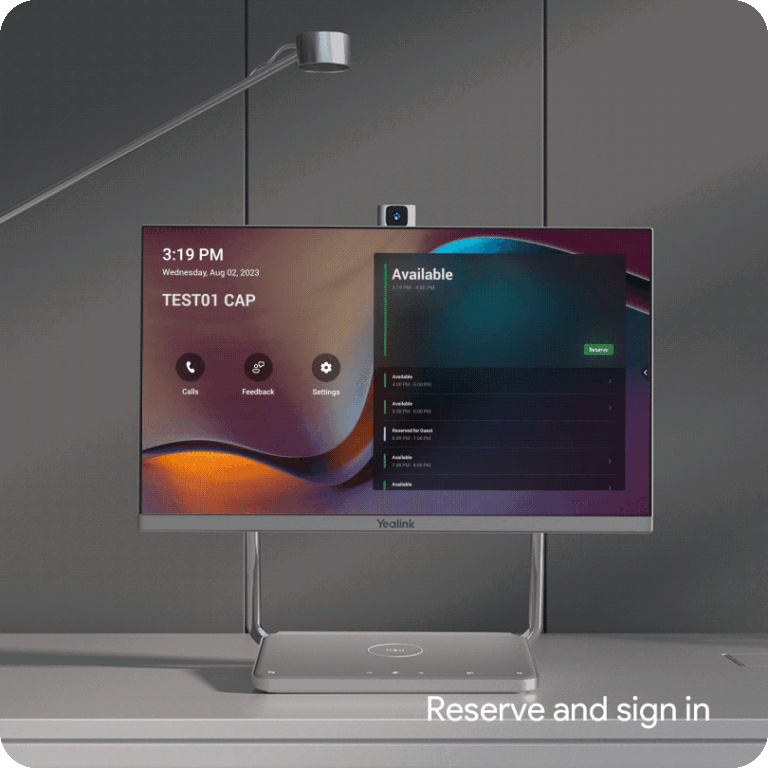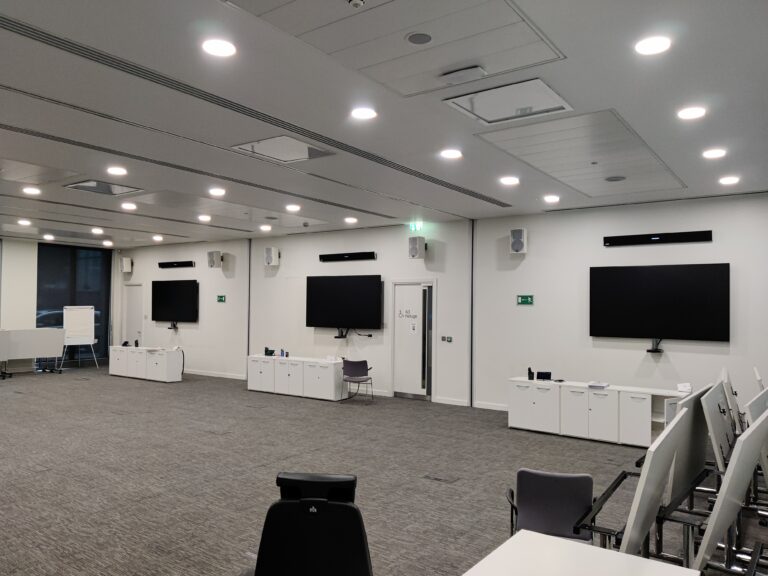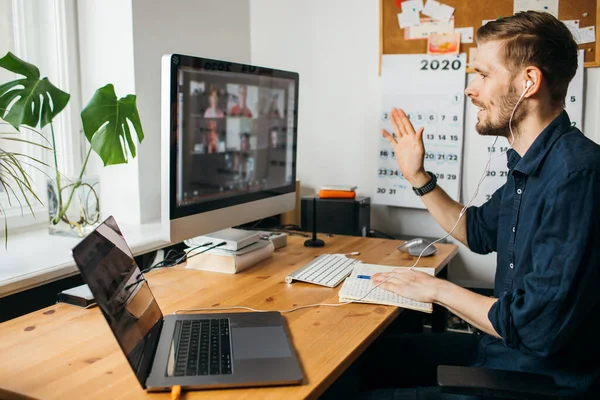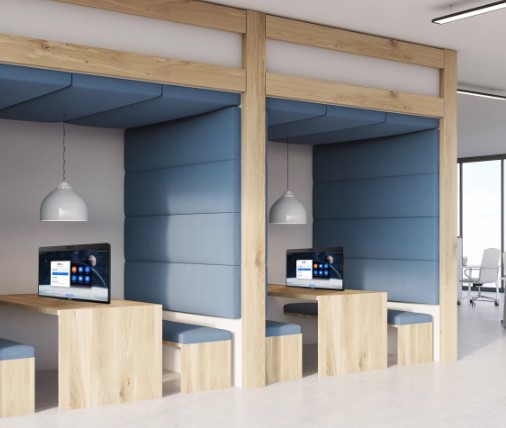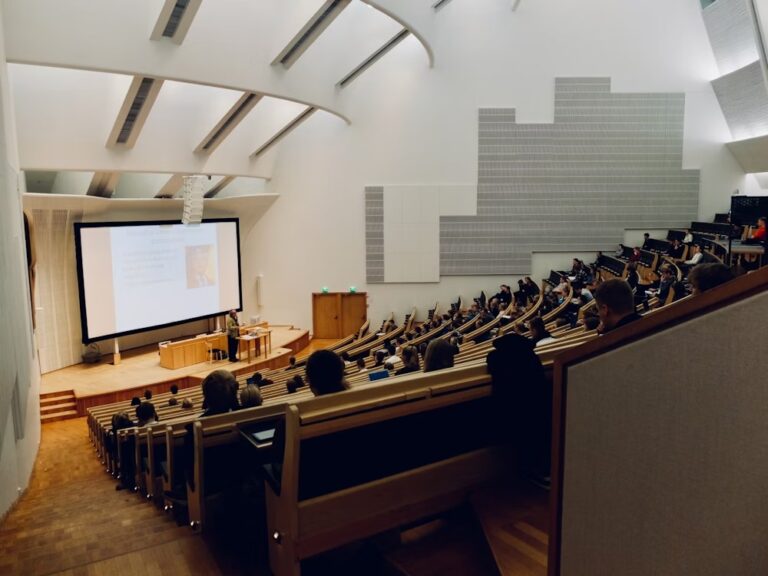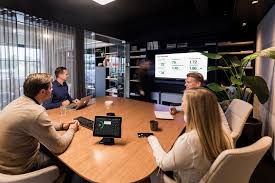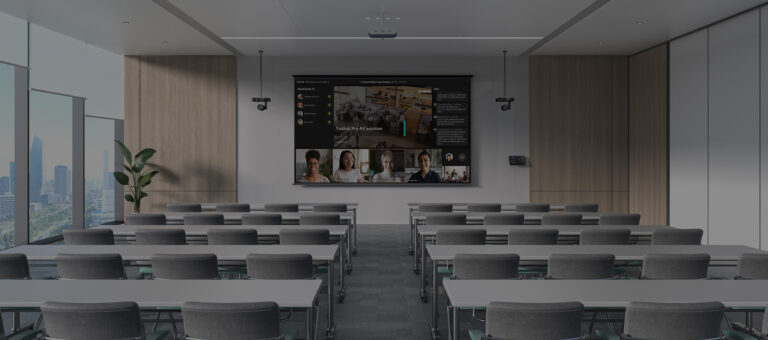INTRODUCING VIRTUAL WATERCOOLERS & LOW-TOUCH CONFERENCE ROOMS
If your office hasn’t declared a “return to work” date, you’re not alone. According to the Society for Human Resource Management or SHRM, 45 percent of organizations are in the same position. A phased return is the standard approach needed to address safety and spacing requirements. The same study also found that 81 percent of employers. Are limiting the number of onsite workers and when workers do come back. 75 percent of employers are staggering start, stop and break times to ensure social distancing and allow time for cleaning.
Poly has been working alongside partners and customers. To help them address and ultimately thrive in this new way of hybrid working. We’re seeing businesses move from responding to the global pandemic. To giving thought to how they redesign their workspace so it can safely accommodate and facilitate a productive and connected workflow.
There are countless considerations. From identifying employee roles that are essential to have on-site to thinking about the type of space and safety requirements needed to accommodate those employees. Technology that may have been considered utility just months ago. Is now stepping in to help companies rethink how they can be operated and used in the office?
TECHNOLOGY TAKES ON A NEW ROLE IN THE NEW OFFICE
In the wake of the global pandemic. Poly has been continuing to evaluate and explore the ways its technology can help make the office productive and safe. Analysing everything from how people start meetings effectively to how they engage in common areas. Here are a few ways Poly technology can strategically help companies as they explore a safe and productive return to the office.
Low-touch conference rooms
Meetings at the office should be as low-stress as possible. Be as easy to start with people conferencing in from home as it is when meeting in-person. The Poly Studio X family of video appliances run our ecosystem partner applications natively. So employees can use their own mobile phone or laptop for proximity join (available on Microsoft Teams and via iOS client only on Zoom) and wireless sharing (available on both Microsoft Teams and Zoom).
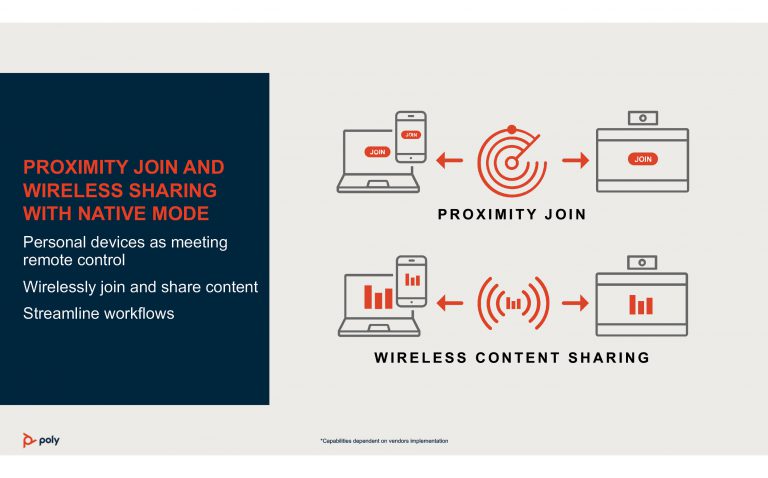
Virtual watercoolers
Maintaining strong social connections in this shift to virtual teams is critical to employee satisfaction and productivity. In fact, two of the top three reasons people want to return to the office, according to a recent Gensler survey. Are socialising and impromptu face-to-face interaction with their colleagues. But when everyone can’t return to the office, how can you fill the void? Virtual watercoolers. Video conferencing appliances create an opportunity to rethink the traditional “office watercooler.”. Historically, the watercooler has been the place to meet and connect socially and create those serendipitous moments of discovery and innovation.
Companies can use video conferencing devices to create a virtual watercooler and offer a space to foster these ad hoc types of meetups. Employees can leverage their personal devices as a low-touch way to connect with high-quality video and built-in production rules like Speaker Framing, Smooth Tracking and Conversation Mode (currently available in Poly Studio USB only).
This helps to bridge the distance of social distancing by bringing those sitting more than six feet apart into the same frame. This creates a more natural experience that makes remote employees feel like they are in the room. Enabling a high-quality collaboration experience. Acoustic Fence and NoiseBlock AI technologies create the best audio experience, eliminating noise around the area (typically in open spaces). While minimising the noise inside the ‘fence’ from far-end meeting participants (chip bag rustling, typing, etc.).
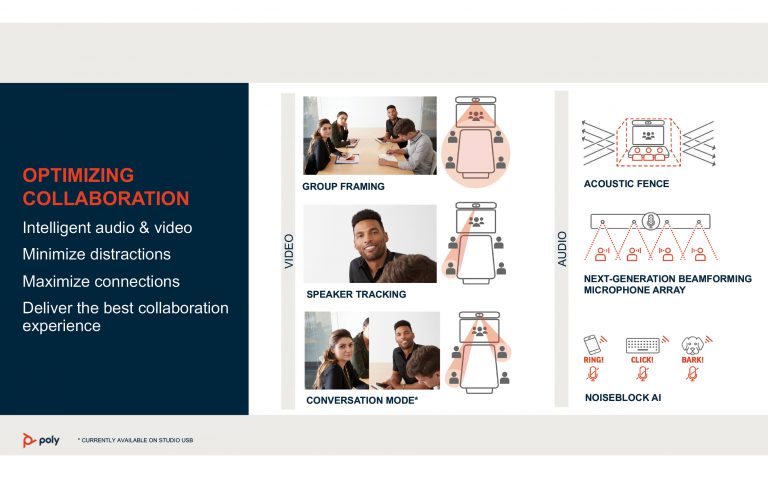
Device management & analytics
Device management through the cloud puts you in control across your entire organisation while the cloud-based architecture gives you security, flexibility and agility. When it comes to collaboration spaces, lower density meetings will be key and touchless conference rooms will be optimal. Spaces designed to hold four people may only fit two with current social distancing guidelines. Where prior to COVID-19 you might have been concerned more with the utilisation of a room (which is still critical).
Now those same people count and usage information is critical to ensure that there aren’t too many people in a space. For the safety of all employees. Testing is underway to understand more innovative ways to use our Poly management software. With Poly Studio X and G7500 devices to empower businesses with insights to manage for safety today. And for optimisation in the future.
The journey to the next normal will look different for everyone, but we believe a focus and investment on the future state of the office. Not just reacting to the current situation. Will enable businesses to address current needs while creating an optimal work environment. One where employees can seamlessly transition between home, office and everywhere in between without sacrificing productivity or connection with their teammates. Leveraging Poly’s decades of experience. We’re looking ahead to help you define and deliver on future requirements across workstyles and workspaces. So you can respond to today’s needs and create an environment that supports the ability to reinvent work in the future.

